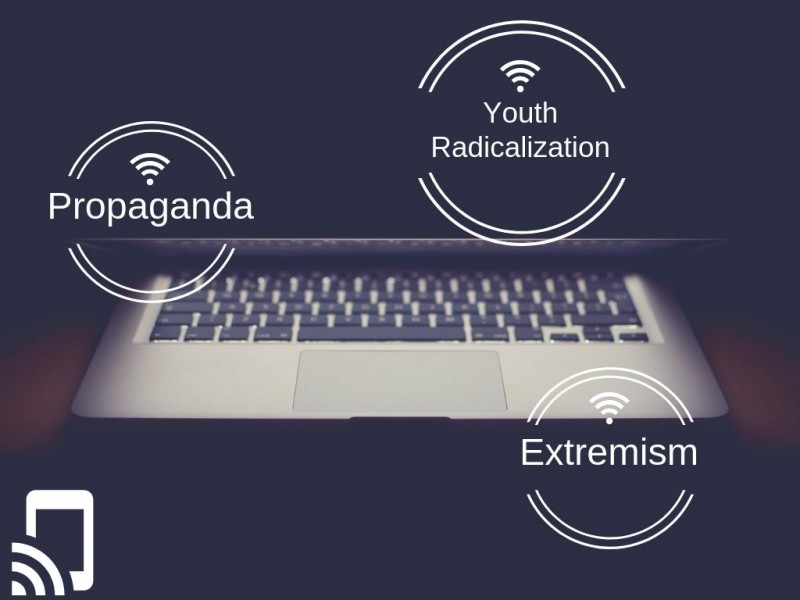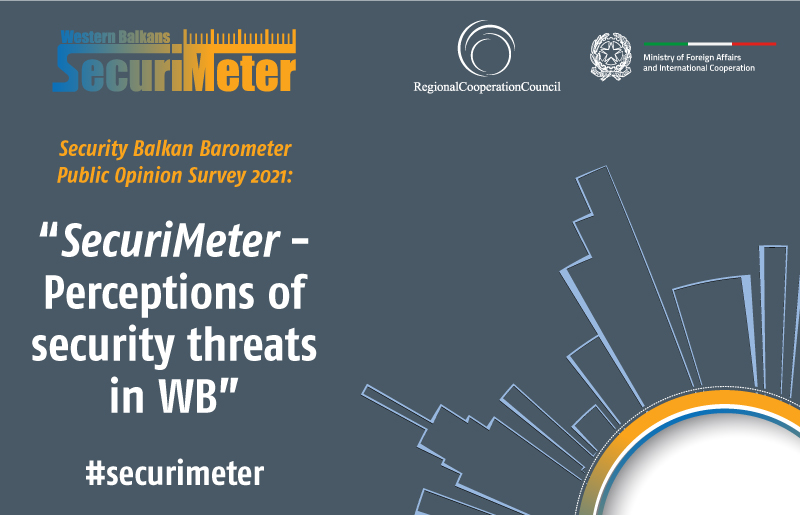- Home/
- News
Obstacles to countering online radicalization in contemporary democracies
Whether one characterizes the present times as an ‘age of uncertainty’[1], the populist era, the age of ‘retropia’[2] or postmodernity, all of these terms refer to the perception that now, more than ever, we live in a fast changing and challenging social and political environment. In the Western world, the rise of social media has coincided with a decrease in legitimacy of the nation state and international order, which is causing social and political ripple effects throughout liberal democratic states. It has changed the ‘Overton window’[3], which is the set of values perceived as mainstream, towards greater acceptance of populist, post-truth and extremist content. While social media undoubtedly presents humanity with an unprecedented set of opportunities, from communication to learning and economic endeavors, it also presents a new set of challenges, including increased tribalism and opportunities for extremist organizations to radicalize, recruit and mobilize followers around the globe.[4]
While academia still grapples with the question of whether radicalization can take place purely online and to what extent one should perceive social media merely as a platform for extremism or as facilitating radicalization by design – for instance, through echo chambers or personal recommender algorithms – governmental and civil society organizations face the challenge of countering online radicalization processes, whatever may cause them. However, there is a multitude of problems associated with this endeavor. In his book War in 140 Characters, Patrikarakos finds an abundance of examples testifying to slow, bureaucratic state structures losing the struggle against the homo digitalis and networks of extremists. While many heads of state are now on Twitter, the ministerial bureaucracies have not adapted to the culture of social media. For instance, Alberto Fernandez, former head of the Center for Strategic Counterterrorism Communications (CSCC) of the US State Department, recalls in an interview with Patrikarakos how difficult it was to implement effective and appealing counter-narratives against ISIS within the constraints of the bureaucratic framework.
Bureaucracies lack credibility
In order to be effective, counter-narratives need to be adapted to the language, tone and style of social media communications, which require a degree of creativity. It is difficult for slow bureaucratic structures to effectively tackle these challenges. “Part of the problem was that my vision was edgy for government and not edgy enough for the space that we work in,” he recalls. [5] Additionally, after heavy censoring by major social media platforms, many extremists have moved towards more closed systems such as Telegram[6] and have retreated even further into tribalized echo chambers, which limits access to the targets of counter-narratives. It requires, above all, credibility to break an individual away from his or her online tribe through a counter-narrative campaign. However, governments and state bureaucracies lack this credibility, which may decrease the effectiveness of counter-measures carrying a government logo.
Should liberal democracies intervene at all?
Aside from, and maybe more importantly than, the problems with developing counter-measures to online radicalization effectively within state structures, are normative concerns surrounding the issue. To what extent should liberal democracies seek to influence their citizens’ worldview or beliefs? Even worse, is how far should liberal democracies try to influence the citizens of other nations in their worldview? How ‘liberal’ is a liberal democracy that heavily intervenes in the ‘marketplace of ideas’?
By now, it is widely known that a distinction must be made between cognitive and violent radicalization, that is, between adhering to a certain radical worldview and taking violent action to advance the goals deduced from this worldview.[7] It is unclear what, if any, connection can be made between these two forms of radicalization and it is contested whether cognitive radicalization is a precursor to violent radicalization.[8 Given this current uncertainty, some may argue that it is problematic if state or state-sponsored counter-measures to online radicalization tackle those who are merely cognitively radicalized. As they do not seek to use violence, they cannot be perceived as a security threat but only as holding non-mainstream beliefs. Does it conform to our understanding of liberal democracy that individuals can be targeted because of their beliefs rather than their actions? What is considered radical or extremist is context-dependent and changes over time. While hundreds of years ago it was considered radical to advocate for women’s voting rights, ideas we may perceive as radical today may come to enter the mainstream in the future. Without the space for radical change in society, progress could stagnate.
Acting against online radicalization: A slippery slope
Nevertheless, one cannot deny that ideas, too, can be dangerous and threaten the liberal order. It can also not be denied that while it is still debated whether (and if yes how likely) radicalization occurs purely online, digital communication and virtual propaganda play an increasingly important role in drawing individuals towards extremist organizations[9] and extremists of all ideological backgrounds use the online sphere to advance their aims.[10] The question is whether governmental institutions should not only monitor the activities and intervene when they cross into illegal or violent action, or use counter-narratives to advance their version of the ‘correct’ and ‘acceptable’ worldview. Some perceive this as the first step on a slippery slope towards an Orwellian ministry of truth, because counter- measures could begin by targeting jihadists and neo-Nazis, but, once established, could be used to run campaigns against all kinds of groups. For example, Russian troll farms have already begun working on advancing the Russian version of reality about the situation in Ukraine both before and after annexation. Therefore, the step from seeking to counter radicalization to altering social reality by way of social media may not be that far.[11]
How NGOs can play a role
Given the sheer amount of problems associated with governmental counter-measures to online radicalization, it is unsurprising that some propose a somewhat intuitive solution to the problem: Civil society in the form of foundations, NGOs and individuals should develop and execute counter-measures in the digital sphere, not the state or government. In many countries this is already the reality, albeit often as hybrid cooperation with civil society and government sharing the burden of developing and implementing de-radicalization measures as well as programs for countering and preventing violent extremism. However, even an approach based entirely on non-governmental organizations comes with an associated set of issues. For instance, the issue of credibility may persist as many NGOs receive funding for these projects from governmental institutions and must make this transparent. The credibility of a great counter-narrative could evaporate into thin air if the video or text closes with a statement that it was funded by the very government the (potential) extremist despises. There are also legal issues surrounding this solution, for instance, the question of at what point targeted individuals must be turned over to authorities.
Conclusion
Overall, one may conclude that all actors face difficult challenges regarding the development and implementation of counter-measures to online radicalization but these especially affect governmental institutions. Liberal democratic governments find themselves torn between transparency and effective messaging, between slow bureaucracy and a rapidly changing virtual world, and between security concerns and normative issues surrounding governmental interference in the opinion-building of citizens in the ‘marketplace of ideas’. It also raises bigger questions about democracy in the digital age and whether our understanding of what a democracy should or should not do is still up-to-date in an age of ‘liquid modernity’[12] with new phenomena such as troll farms, twitter wars and extremists winning the war of words on social media.
These broader questions, as well as issues surrounding the counter-measures to online radicalization, will only grow in importance in the next years and it is paramount for political decision-makers, academics and civil society to negotiate an effective approach to these problems.
[1] Eichengreen, B. (2016). This is a true age of uncertainty for the world economy. https://www.theguardian.com/business/2016/dec/14/2016-world-economy-donald-trump-eu-jk-galbraith
[2] Baumann, Z. (2018). Retropia. Suhrkamp: Berlin
[3] Bartlett, J. (2017). Radicals Chasing Utopia: Inside the rogue movements trying to change the world. Nation Books: New York
[4] Cavanagh, S. (2019). Hivemind: The new science of tribalism in our divided world. Grand Central Publishing: New York
[5] Patrikarakos, D. (2017). War in 140 Characters: How Social Media is Reshaping Conflict in the Twenty-first Century. Basic Books: New York, p. 242
[6] Bloom, M. Hicham, T. and Horgan, J. (2017). Navigating ISIS’s Preferred Platform: Telegram. Terrorism and Political Violence. DOI: 10.1080/09546553.2017.1339695
[7] McCauley, C. and Moskalenko, S. (2014). Toward a Profile of Lone Wolf Terrorists: What Moves an Individual From Radical Opinion to Radical Action. Terrorism and Political Violence. Vol. 26 (1), pp. 69-85
[8] Guhl, J. (2018). Why beliefs always matter, but rarely help us predict jihadist violence: The role of cognitive extremism as a precursor to violent extremism. Journal for Deradicalization. Vol. 14, pp. 192-217
[9] Gill, P., Corner, E., Conway, M., Thornton, A., Bloom, M. and Horgan, J. (2017). Terrorist Use of the Internet by the Numbers. Criminology & Public Policy. Vol. 16 (1), pp. 99-117
[10] Ebner, J. (2019). Radikalisierungsmaschinen: Wie Extremisten die neuen Technologien nutzen und uns manipulieren. Suhrkamp Nova: Berlin
[11] Patrikarakos, D. (2017). War in 140 Characters: How Social Media is Reshaping Conflict in the Twenty-first Century. Basic Books: New York
[12] Baumann, Z. (2007). Liquid Times: Living in an age of uncertainty. Polity Press: Cambridge
Author: Linda Schlegel
Source: Link



 Development of specialized PCVE web site is funded by EU FUNDS CN 2017-386/831 - "IPA II 2016 Regional Action on P/CVE in the Western Balkans"
Development of specialized PCVE web site is funded by EU FUNDS CN 2017-386/831 - "IPA II 2016 Regional Action on P/CVE in the Western Balkans"